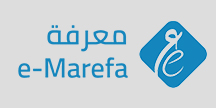The Effect of Multimedia Usage on EFL Learners' Improvement in Conversational Listening Skill at University Level
DOI:
https://doi.org/10.21271/zjhs.24.6.16Keywords:
: Effect, Multimedia, Unimedium, Teaching, Conversation, Tertiary learners & Listening skill and sub-skills.Abstract
The current research is experimental which tries to investigate the EFL tertiary learners’ development level of the conversational listening skill through using multimedia materials depending on quantitative data collection and analysis.
Due to the fact that the 21st century learners have many ways of exposure to native and native-like listening authentic multimedia materials, instructors should indicate the effect of using such multimedia materials.
The study aims to find out the influence of multimedia on enhancing the learners’ conversational listening (sub-) skills in second-year learners at English Department/ College of Basic Education/ Salahaddin University-Erbil for academic year 2019-2020. For this reason, a quasi-experimental research design where a control group including 20 learners and an experimental group involving 20 learners were investigated. The researchers concentrated on teaching ten conversational listening sub-skills in their instructional course design.
The study findings revealed that the experimental group learners (taught via using multimedia materials) outperformed the control group participants (taught via using unimedium materials) in conversational listening skills based on the statistically significant difference between the results of the pre- and post-treatment tests estimated by a pair-samples t-test in SPSS.
References
Atkinson, R. K., Mayer, R. E. & Merrill, M. M., 2005. Fostering social agency in multimedia learning: Examining the impact of an animated agent’s voice. Contemporary Educational Psychology, 30(1), pp. 287-298.
Azeez, P. Z., 2019. The Effects of Mobile Assisted Language Learning on Developing Koya University Kurdish EFL Students’ Listening and Speaking Skills. Unpublished Dissertation: Salahaddin University-Erbil.
Baddeley, A. D., 1992. Working Memory. Science, 255(5044), pp. 556-559.
Barta, E., 2010. Test takers’ listening comprehension sub-skills and strategies. WoPaLP, 4(1), pp. 59-85.
Chandler, P. & Sweller, J., 1991. Cognitive load theory and the format of instruction. Cognition and Instruction, 8(1), pp. 293-332.
Cheng, A. & Wang, Q., 2012. English Language teaching in Higher Education in China: A historical and social overview. In: J. Ruan & C. B. Leung, eds. Perspectives on Teaching and Learning English Literacy in China. New York, London: Springer, pp. 18-33.
Dangol, E. S., 2018. Multimedia. [Online]
Available at: https://www.scribd.com/document/379982594/Chapter-5-Multimedia
[Accessed 22 January 2020].
Diyyab, E. A., Abdel-Haq, E. M. & Aly, M. A.-S., 2013. Using a Multimedia-Based Program for Developing Student Teachers' EFL Speaking Fluency Skills. Egypt: Bahna University.
Grzeszczyk, K. B., 2016. Using multimedia in the English language classroom. World Scientific News, 43(3), pp. 104-157.
Hawley, M. J., 1993. Structure out of sound. Massachusetts: Massachusetts Institute of Technology (PhD Dissertation).
Kartal, G., 2010. Does language matter in multimedia learning? Personalization principle revisited. Journal of Educational Psychology, 102(3), pp. 615-624.
Kurt, A. A., 2011. Personalization principle in multimedia learning: Conversational versus formal styel in written word. The Turkish Online Journal of Educational Technology, 10(3), pp. 185-192.
LaMotte, A., 2015. Personalization Principle: Speaking to Instead of at Your Learners. [Online]
Available at: https://community.articulate.com/articles/personalization-principle-speaking-to-your-learners-instead-of-at-them
[Accessed 6 April 2020].
Li, G. & Ni, X., 2012. Use of technology to support the learning and teaching of English in China. In: J. Ruan & L. C. B., eds. Perspectives on Teaching and Learning English Literacy in China. New York, London: Springer, pp. 145-160.
Mayer, R. et al., 1996. When less is more: Meaningful learning from visual and verbal summaries of science textbook lessons. Journal of Educational Psychology, 88(1), pp. 64-73.
Mayer, R. E., 2002. Multimedia Learning. The Psychology of Learning and Motivation, 41(1), pp. 85-139.
Mayer, R. E., 2009. Multimedia Learning. 2nd ed. Cambridge: Cambridge University Press.
Mayer, R. E. & Gallini, J., 1990. When is an illustration worth ten thousand words?. Journal of Educational Psychology, 82(1), pp. 715-726.
Mayer, R. E. & Massa, L. J., 2003. Three facets of visual and verbal learners: Cognitive ability, cognitive style, and learning preferences. Journal of Educational Psychology, Volume 95, pp. 833-846.
Mayer, R. E., Sobko, K. & Mautone, P. D., 2003. Social cues in multimedia learning: Role of speaker's voice. journal of Educational Psychology, 95(2), pp. 419-425.
Mayer, R. E., Steinhoff, K., Bower, G. & Mars, R., 1995. A generative theory of textbook design: Using annotated illustrations to foster meaningful learning of science text. Educational Technology Research and Development, 43(1), pp. 31-44.
Moreno, R. & Mayer, R., 1999. Cognitive principles of multimedia learning: The role of modality and contiguity. Journal of Educational Psychology, 91(2), pp. 358-368.
Moreno, R. & Mayer, R., 2004. Personalized messages that promote science learning in virtual environments. Journal of Educational Psychology, 96(1), pp. 165-173.
Mousavi, S., Low, R. & Sweller, J., 1995. Reducing cognitive load by mixing auditory and visual presentation modes. Journal of Educational Psychology, 2(87), pp. 319-334.
Qin, P., Wang, Y. & Qin, Z., 2012. Discussion on young teachers' teaching methods. In: A. Xie & X. Huang, eds. Advances in Computer Science and Education. New York, London: Springer Hedelberg, pp. 117-121.
Ruf, 2016. Short- and Long-Term Modality Effect in Multimedia Learning. Wiesbaden : Springer.
Song, J., G., L., Liu, G. & Walls, R., 2005. Are teachers in China ready to teach in the 21st century?. Journal of Technology and Teacher Education, 13(1), pp. 197-209.
Stamatoudi, I. A., 1999. Multimedia Products as Copyright Works. Leicester : University of Leicester (Published PhD Dissertation).
Tubail, M. M., 2015. The Effectiveness of a Suggested Program in Developing Eighth Graders' Listening Comprehension Skills and Their Attitudes towards Listening. Gaza: The Islamic University-Gaza.
Vaseghi, R., Ramezani, A. E. & Gholami, R., 2012. Language learning style preferences: A theoretical and emperical study. Advances in Asian Social Science (AASS), 2(2), pp. 441-451.
Zhong, Y. X. & Shen, H. Z., 2002. Where is the technology-induced pedagogy? Snapshots from from two multimedia EFL classrooms. British Journal of Educational Technology, 33(1), pp. 39-52.
Zhu, Y. F., 2012. Principles and methods in teaching English with multimedia. In: A. Xie & X. Huang, eds. Advances in Computer Science and Education. New York, London: Springer Heidelberg, pp. 135-139.
Additional Files
Published
How to Cite
Issue
Section
License
Copyright (c) 2024 Tahsin Hussein Rassul, Hussein Ali Wali

This work is licensed under a Creative Commons Attribution 4.0 International License.
Except where otherwise noted, content on this site is licenced
under a Creative Commons Attribution License 4.0 (CC BY- 4.0)









